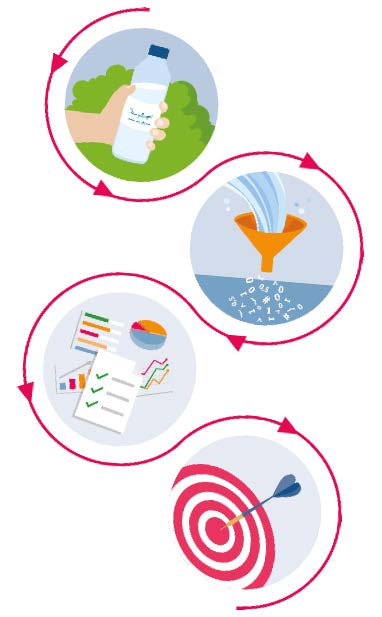Protect Water Quality
We all have a role to play in protecting water quality in the Regional District of Nanaimo. Whether you are on well water and septic or city water and sewer, there are simple precautions you can take to make sure our water stays clean and safe
Be Aware
Being aware of our region’s vulnerable areas and how contaminated water may get to them is key to reducing our impact on habitats and drinking water sources.
Vulnerable Areas
There are two main vulnerable water areas in the RDN: vulnerable aquifers and the riparian ecosystem. Learn more about the role these areas play in our water system:
Stormwater Run-Off
When rain reaches the ground, the water can soak into the soil and aquifers below ground, or travel across the land surface into a watercourse, ditch or drain. The latter is what we call stormwater run-off.
In nature, rainfall is slowly absorbed through the soil. This filters out pollutants and replenishes the groundwater aquifers. In urban areas, where most surfaces are impermeable (concrete, pavement, roofs), stormwater is directed into storm drains. After a downpour, anything that has been sitting on the ground surface gets picked up spread across the landscape. It could be an oil slick on your driveway or pesticides sprayed on your lawn. Those substances pollute the run-off that ends up in the storm drains and then in our waterways.
Learn more about stormwater management.
What can you do to reduce stormwater run-off?
The three main principles to reducing stormwater run-off are retain, detain, and reuse:
- Retain: Increase the storage capabilities of your property to slow down the movement of stormwater. You can do this by incorporating rain gardens and swales.
- Reuse: Water consumption doubles in the summertime due to outdoor use and recreation. Use your stored rainwater for watering your gardens in the summertime when our drinking water resources are at their most strained.
- Detain: Store rainwater in cisterns, rain barrels, or ponds for later use when required. See Rainwater Harvesting Rebate for support installing a cistern.
You can also reduce run-off by increasing permeable surfaces on your property. The more water that makes it into the ground, the less that’s going through storm drains. Opt for surfaces like gravel and soil over concreate and pavement whenever possible.
Never dump anything down a storm drain
Just like how stormwater run-off can pollute our waterways through storm drains, dumping waste down the storm drain can contaminate our water ways. Instead of letting this waste wash into storm drains, you can:
- Find a recycling facility near you to dispose of used motor oil or other toxic liquids
- Wash your car over grass or gravel or at a commercial car wash centre where their water is typically recycled and treated on-site
- Still unsure? Ask us at watersmart [at] rdn.bc.ca (watersmart[at]rdn[dot]bc[dot]ca)
Reduce the Impact
Be WellSmart
The WellSmart education program helps private well owners protect the quality and supply of their drinking water. As a private well owner, you have access to one of nature’s most valuable resources – cool, clean groundwater. You rely on this precious resource to supply clean, safe drinking water to your family.
Be SepticSmart
SepticSmart is an educational program that provides homeowners with information on how their septic system works and how to care for it.
Be WaterSmart
The WaterSmart program is focused on helping residents learn about the importance of reducing our consumptions and protecting the quality of our drinking water.
Proper Disposal and Alternative Products
Water quality can be impacted if we are not careful with how we dispose of unwanted products. Old paints, pesticides, cleaners, pharmaceuticals, etc. should be taken to the appropriate Household Hazardous Waste disposal facility.
Septic systems and sewer treatment plants cannot remove all the chemicals that some household products contain. Even after going through a treatment plant, some chemicals that don't break down easily can enter the environment in trace amounts, eventually accumulating into amounts large enough to impact aquatic habitat.
Find out how to properly dispose of hazardous items through the RDN Recycling Directory.
Many products available as household cleaners, cosmetics or pesticides can contain chemicals that are harmful to our health and harmful to the environment. There are many natural recipes to try at home, so you can make your own non-toxic alternatives:
- David Suzuki Foundation's Take Action: Act At Home articles
- Georgia Strait Alliance's Toxic Smart solutions
